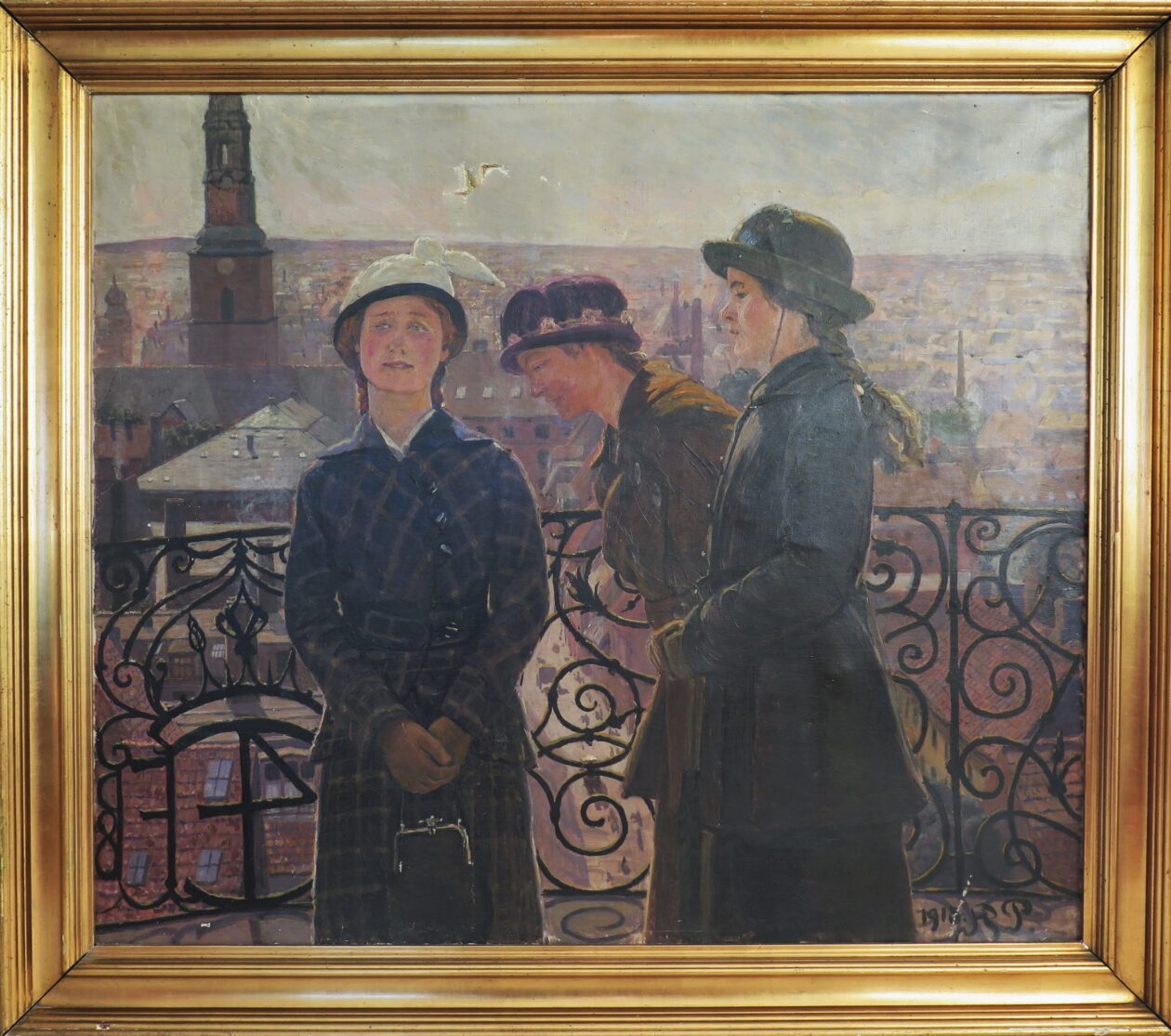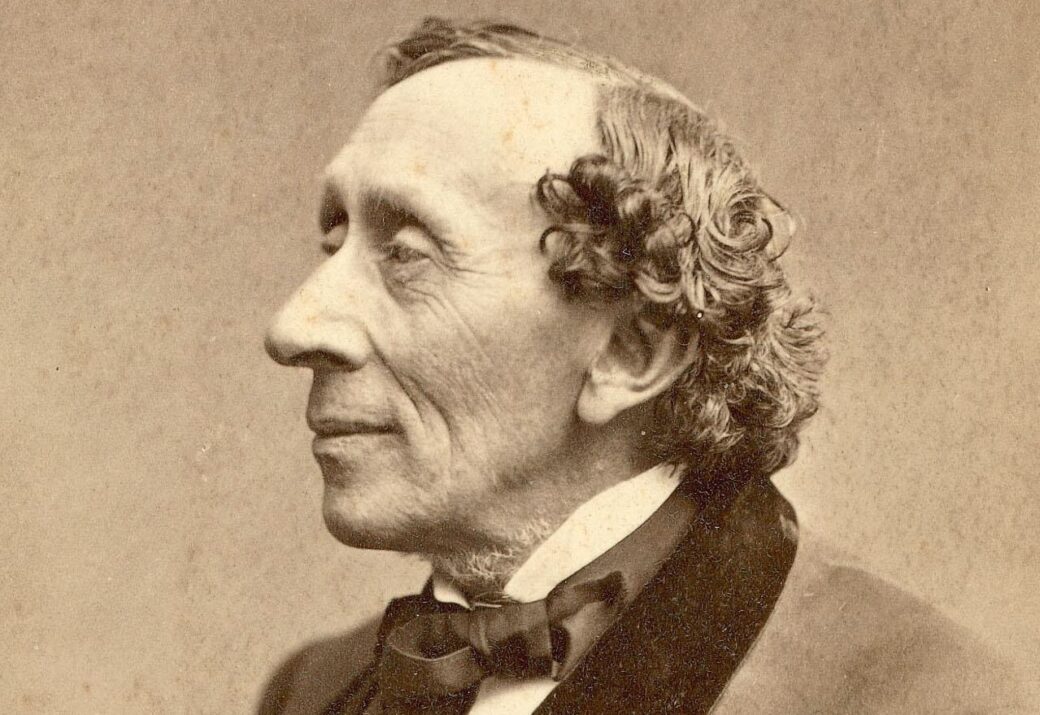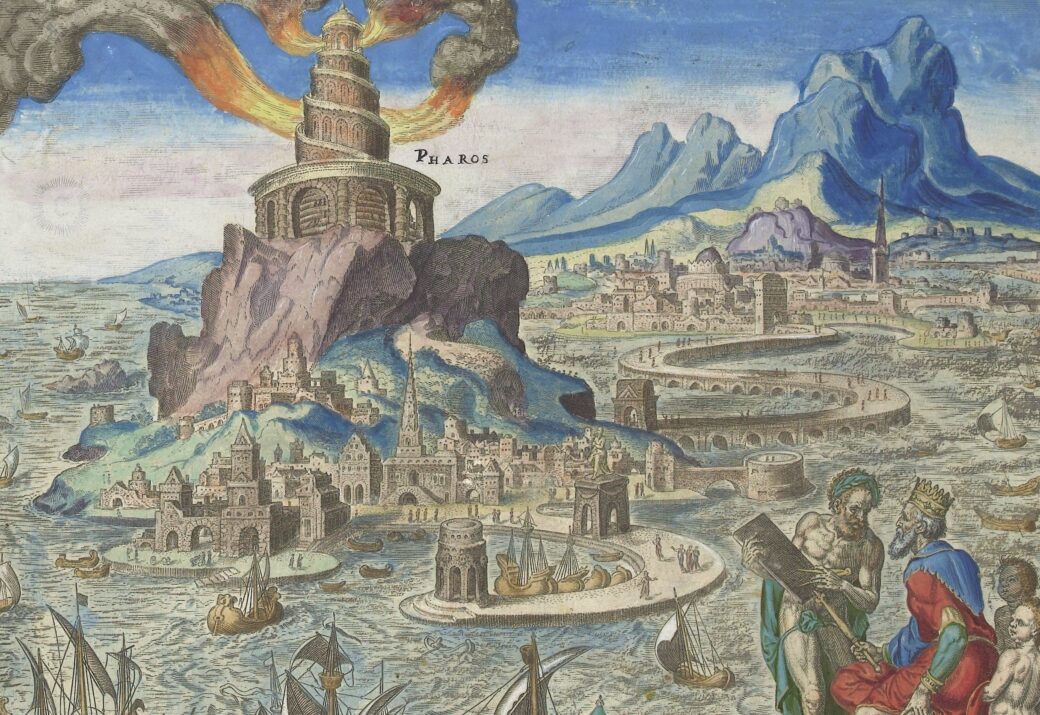This website uses cookies so that we can provide you with the best user experience possible. Cookie information is stored in your browser and performs functions such as recognising you when you return to our website and helping our team to understand which sections of the website you find most interesting and useful.
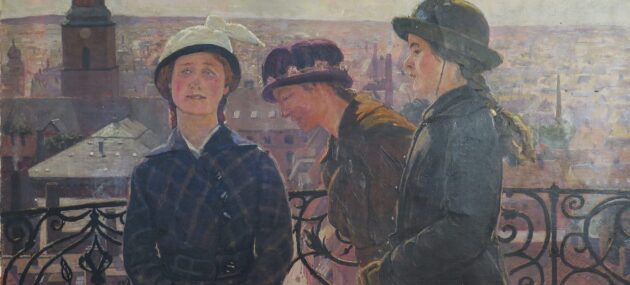
Confirmands in the Round Tower
There are 457 steps to the Round Tower from the Church of the Holy Ghost (Helligaandskirken) in Copenhagen, only 385 from the Church of Our Lady (Vor Frue Kirke), and between the Trinity Church (Trinitatis Kirke) and the entrance to the Spiral Ramp there are only a few.
But it is hardly the short distance alone that has caused generations of newly minted confirmands to climb the Round Tower, as it has been a tradition for them to do since the late 18th century, when their confirmation was successfully completed in one of the churches of Copenhagen.
There is also a deeper, or perhaps one dares to say higher meaning. Once the top of the tower is reached, one finds oneself high above street level in a place where it is possible to really get the sense of being on top of the world with the ability to spread ones wings. And if some confirmands find themselves to be a little too squat for adulthood, the many metres of the tower will have added themselves reassuringly to their own height, and braced their confidence.
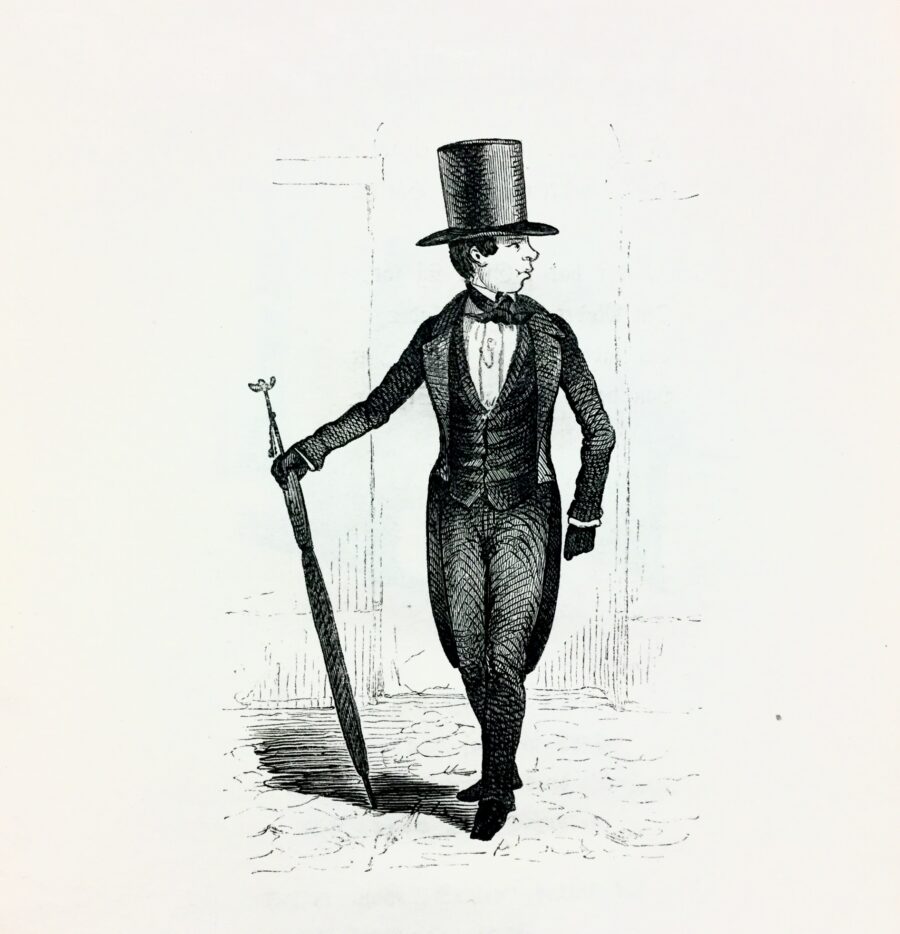
Hans Christian Andersen
One of those who have a sense of the trip in the tower as a symbolic mastery of the world is the fairy-tale writer Hans Christian Andersen (1805-1875), who in the novel O.T. from 1836 tells the story of a young confirmand that would have liked to be a flautist at the regiment.
”His highest wish had been to see himself as a regimental fifer, and then he should have gone to his confirmation in his red uniform, with a sabre at his side, and a feather in his hat half as tall as himself. Thus adorned, he could have gone with the girls into the King’s Garden and upon the Round Tower, the usual walk for poor children in Copenhagen”, Hans Christian Andersen writes and further explains: “On Confirmation-Day they ascend the high tower, just as if they were to gain from it a free view over the world.”
The same point peeps out in the fairy tale “The Little Elder-Tree Mother” (“Hyldemoer”) from 1850 when Hans Christian Andersen lets one of his characters say: ”and then we were confirmed; we both wept; but in the afternoon we went out hand in hand, and ascended the Round Tower and looked out into the wide world right over Copenhagen and the sea”.
Proceeding to Frederiksberg or the King’s Garden
Apparently the tower trip was so important that it was one of the first things one did after being confirmed. In the partially autobiographical novel From the Old Factory (Fra den gamle Fabrik), which the author Vilhelm Bergsøe (1835-1911) published in 1869, the protagonist tells us that “old Rasmus had taught me about the additional purpose of the tower; the first thing one did as an adult and confirmand, was to go up there and spit over the railing, before moving on to Frederiksberg”. Aforesaid Rasmus also has an explanation for what the spitting was good for: “Then one does not die of consumption,” he says.
“That was the time when it was mandatory for young gentlemen to wear their hair in a queue, while the hair of the young ladies was piled high upon their heads, and just like the boys’ was duly powdered”
One did not need to go as far as to Frederiksberg in order to continue the festivities. One could simply set off to the King’s Garden, only a stone’s throw from the Round Tower, and stroll around in the shadow of King Christian IV’s Rosenborg Castle. As historian E.C. Werlauff (1781-1871) relates in his memoirs:
“In my childhood and youth the Rosenborg Garden was closed in the winter, but it always opened on Confirmation-Sunday in the spring. Thus one would often encounter confirmands there, who would also frequently visit the Round Tower on these confirmation days.” That was the time when it was mandatory for young gentlemen to wear their hair in a queue, while the hair of the young ladies was piled high upon their heads, and just like the boys’ was duly powdered. It certainly must have been a pretty sight.
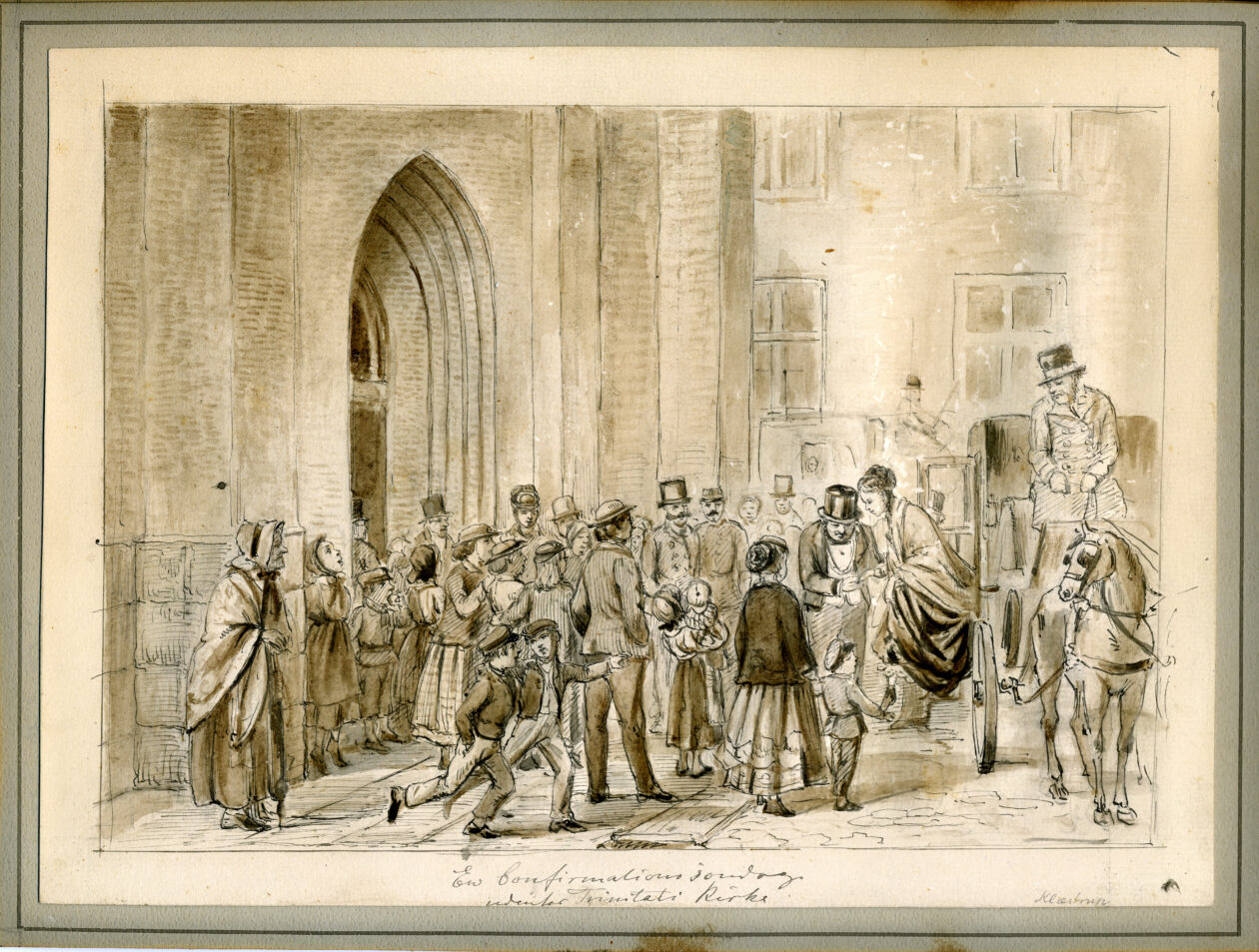
See it All a Bit From Above
The young people whom the painter Henny Panduro (1863-1930) depicted in 1916 in her painting “Confirmands on the Round Tower” (“Konfirmander paa Rundetaarn”) were, however, not that powdered. The painting depicts three young women standing in front of Caspar Fincke’s famous lattice at the top of the tower and thus documents that at least some confirmands still found their way to the Round Tower during the time of the First World War.
Today, the Round Tower might not be the first thing the confirmands think of when they step out of the church. But should they have the desire to see it all a bit from above, the tower still stands here. It is actually almost like hearing an echo of Hans Christian Andersen, when a contemporary website for confirmands is suggesting how the young people should spend their Blue Monday, i.e. the Monday after confirmation:
“When you are anyways walking around the pedestrian area Strøget in Copenhagen, you might as well swing by the Round Tower – it gives you an overview :-)”. And they are certainly more than welcome. We just hope that they don’t still spit over the railing.
